Tips 👏
⏱ Duration
It took us around 2 months to get our planning right. The execution was fast, but picking up the destinations was the longest and hardest.
⚠️ In advance
- Flights and hotels prices usually increase with time.
- Start your vaccinations as early as you know your itinerary.
- Check the VISA requirements of the countries in the list before booking.
- If you’re travelling often for work, register for points at airlines and hotels.
- If you have a problem while travelling, keep all your receipts with you and never pay cash.
Planning our worltrip was very hard, and had a lot of back-and-forth around the durations and destinations. It took us a while to agree on a itinerary before booking, and was quite stressful. Here’s the 11 steps, lol, we would recommend to be the most efficient.
1. The country list 📝
We started by browsing around, each on our side, about which countries we fancied the most to visit. We then both came with a list of 10 different ones, and tried to prioritize those without hurting each other feelings and expectations. We agreed on the following criterias, by importance order:
- Difficulty and distance to reach (Easter Island for example).
- Time needed to move in the country (China for example).
- Effort and safety to apply in the country (Bolivia for example).
We essencially wanted to go almost exclusively in places which we couldn’t or wouldn’t reach within our 2 weeks of holiday per year. Bali for example didn’t made the cut. While we both were craving to go, it’s fairly easy to reach from UK and can be done in a normal holiday.
One other thing we’ve agreed on was to add a relaxing place at the beginning and end of the trip, to smooth the ease-in-out of the experience. Leaving home/job, or moving back is stressful, so some relaxing time is welcome.
2. The duration estimation 🗓
After few heated debates, we got our top-ten list. We then tried to decided how long we could stay in all those places to see most of it, without needing to take a second mortgage.
We decided for each country to take a quick look of its higlights. We then put them onto a map, looked a distances and read other travel blogs. Without getting into too much details, that gave us a good overview per country, and made us realized our trip was for a year.
Initially, we planned to leave for a year, but then we shorted it to 8 months, to then 5 months. Mostly because of the money, but also because we were not sure how long we would enjoy moving around. Few budget estimations later, we sadly decided to kill two countries of our list, making the trip shorter but with more money, travel trolley yo.
PS: Coming back from the trip now, we both agree 5 months was the perfect duration. It’s obviously very personal, but keeping moving around is tiring. We would actually have love two times 3 months with 1 month break in the middle.
3. The safety check ⛑
Having the duration and the list in hand, we moved on to checking the safety and political situation of those countries. Sadly nowadays, it tends to change very fast, but it’s good to double check before leaving. We started by browse BBC news.
We then checked the British government website, where they gave good informations about current situations, as well as warning for travellers. Avoid to go in red countries! Here’s the example for Bolivia.
Lastly, we registered onto the Ariane Project. By submitting our travel route with our dates, we received email notifications related to the countries we were visiting in case of danger or political tensions, including travel safety advices. That was very helpful when we visited Hong Kong and Bolivia.
NOTE: Most of what you’ll read online will put you off since the world is a dangerous place. We went in tense areas and had no issues. Use those informations to know if you need to be extra careful, avoid war areas and you’ll be fine.
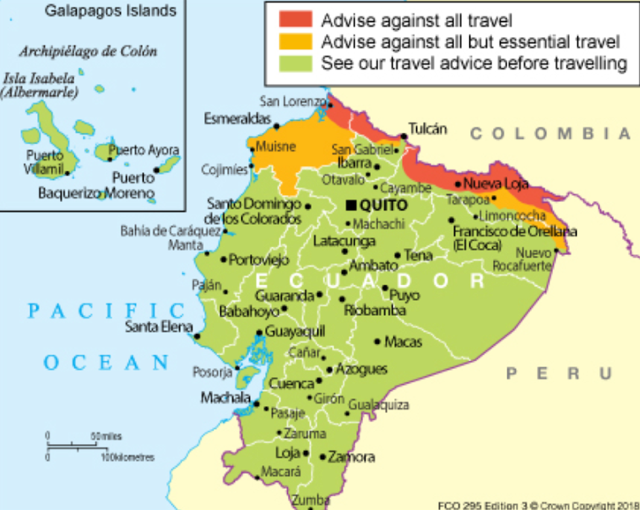
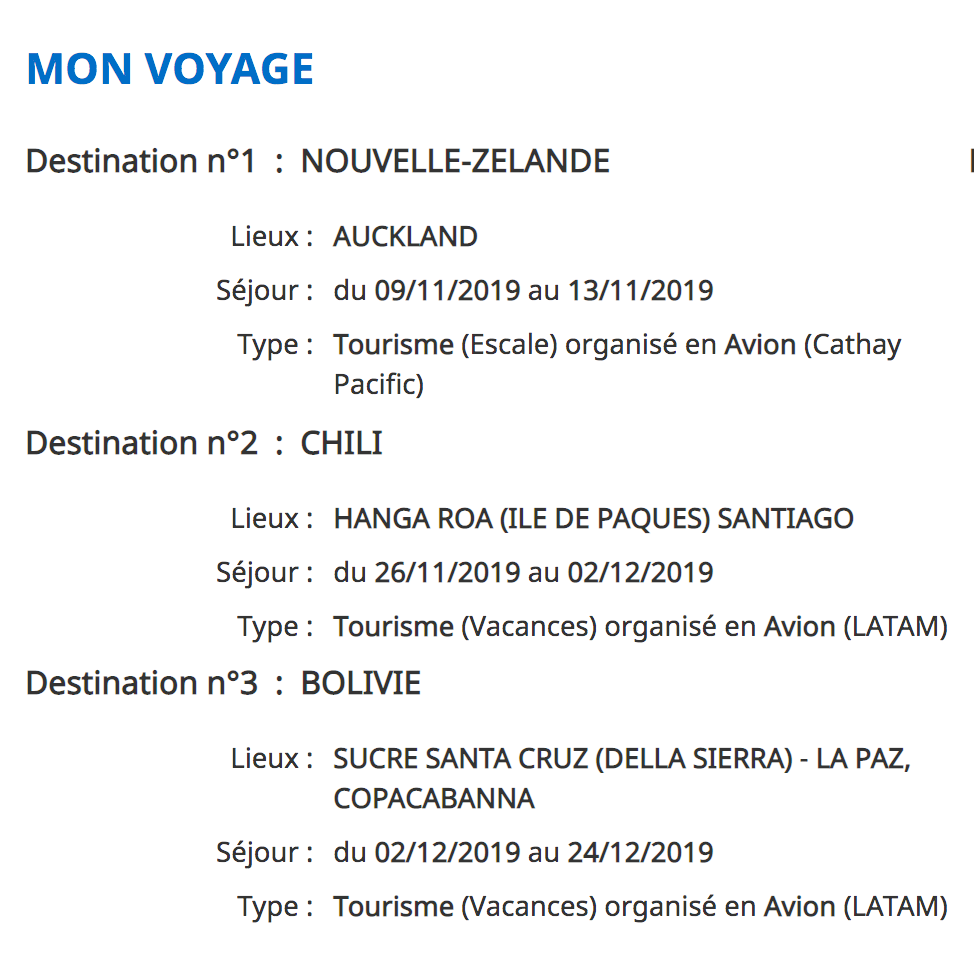
4. The visas check 🛂
After checking the safety, we moved on to the law. We wanted to be sure we would be welcome to enter in all the coutries we intended too without issues. We found out that most of the government websites have a section for that, explaining if we would need a VISA or not. We also discovered another website, CIBT Visas, which gathered all the informations needed for all nationalities.
We happily found out that besides China, we didn’t need any VISAS because we were Europeeans, go EU 🇪🇺!
5. The season matching 🍁
After getting our final list, and agreeing on the duration, we had to decide the order. While most of the time it will look obvious for geographic reasons, a super important thing to check is the seasons. No one want to spend two weeks under the rain in Polynesia.
A hard truth is that it’s impossible to get it perfectly. We sadly had to go through several wet seasons while travelling. But taking a look upfront and try to optimize it cannot hurt. To do so, we used a very cool french website, where we could input our destinations and dates, and then could observe on a simple diagram if our timing was good or not. It also let us see on the map our itinerary, and gave us budget estimations per country visited.
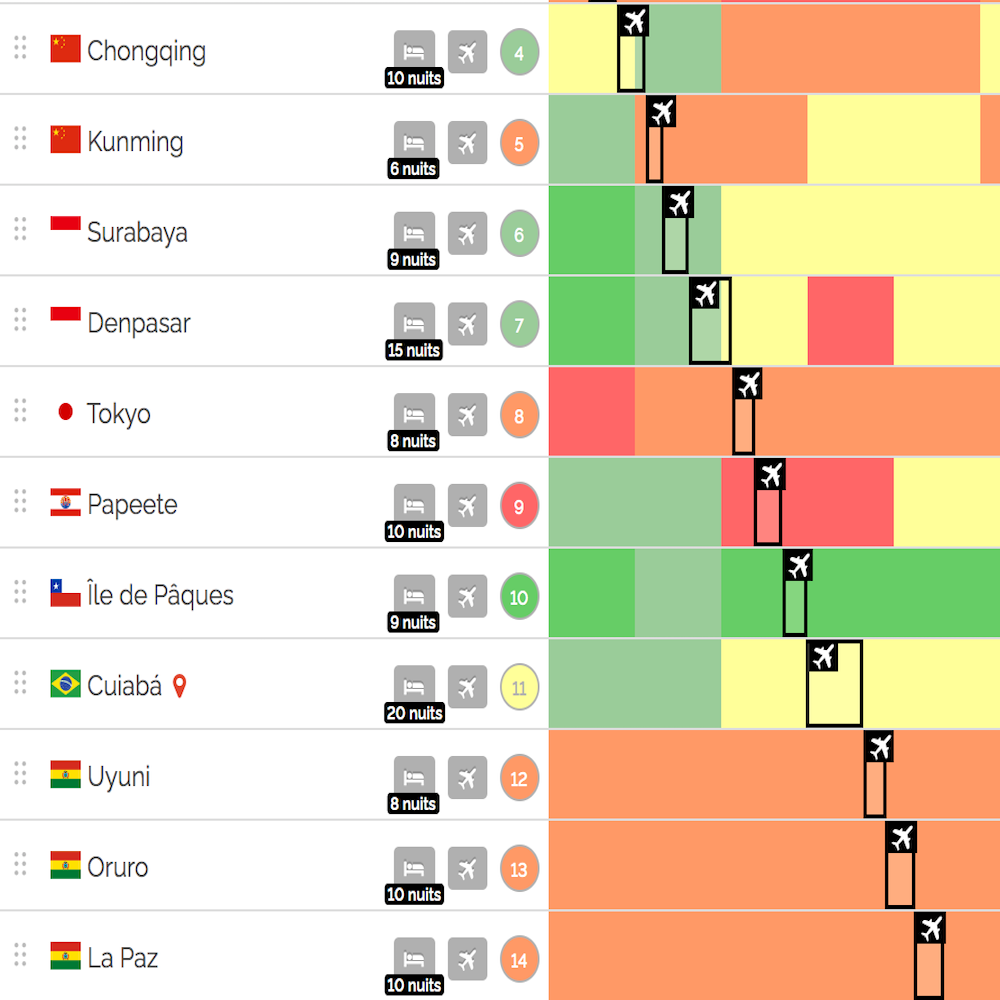
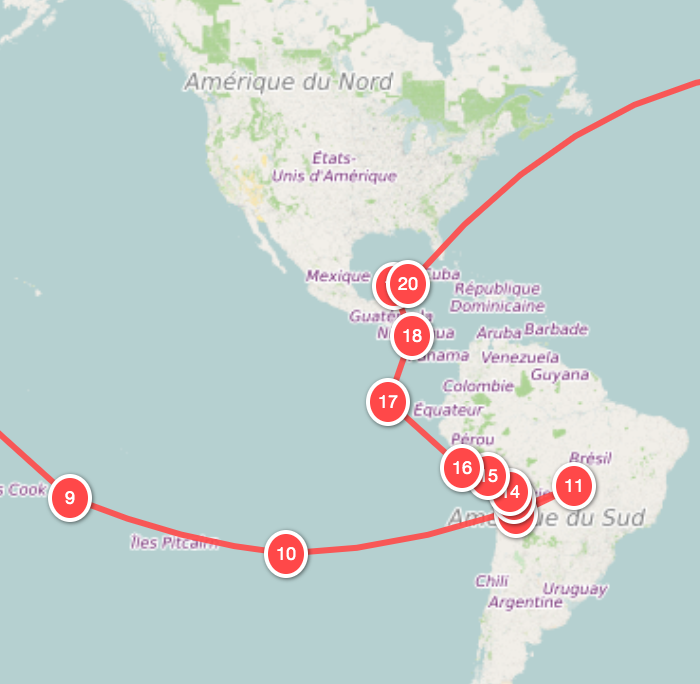
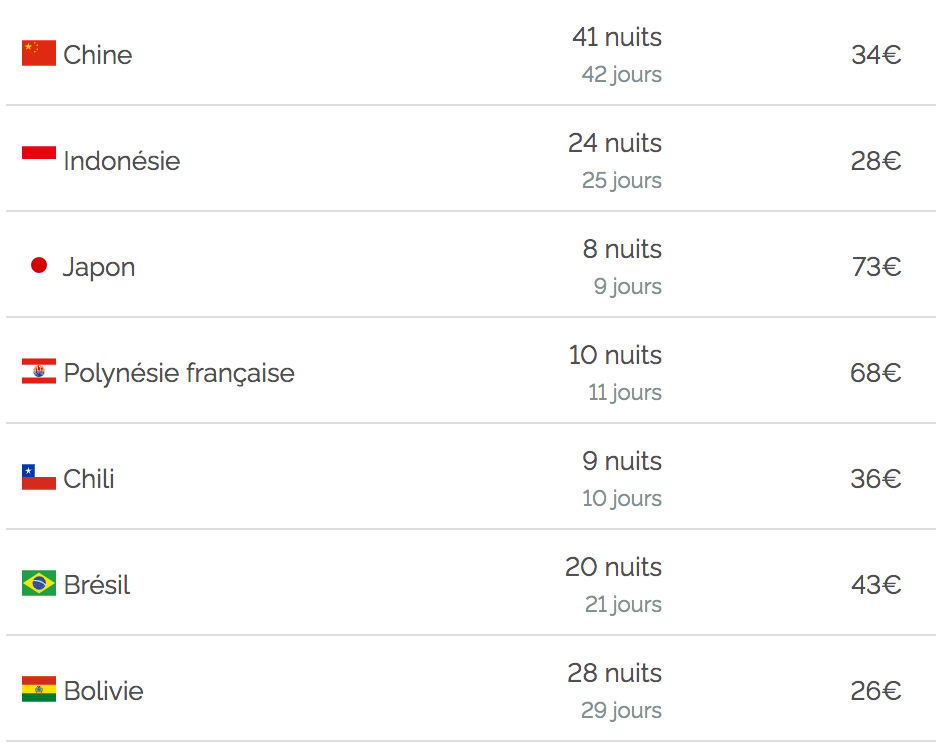
After playing with the tool for few weeks, we managed to get our most-optimized itinerary. Also note that we had to go back-and-forth with those three steps quite often, it’s far from perfect.
6. The big fat flight route ✈️
After few weeks of headaches, we finally were happy with our itinerary. We then open the chapter of flights, which sadly is correlated. In the case of a complex itinerary like ours, the best option was to book all the long-hauls with the same airline alliance, to get them under the same ticket. That ensured us to be automatically re-booked in case of delay/reschedule/cancellation.
Keeping that in mind, we decided to go with OneWorld Alliance since we both had a silver status with them (thanks business trips), giving us a wide range of benefits, but also because they covered a lot of destinations. From there, we used Google Flight filtering by airline alliance, to find out which flight routes were available for our dates.
In our case, we needed a ticket with 11 long-hauls, which was too complex for basic Online Travel Agencies such as Expedia. We had only two options to proceed to the booking:
- One World RTW: Online tool for round-the-world ticket with One World alliance.
- Travel agency: Take care of the complex part and get a good price because have deals with airlines.
We tried the first initially, but without success since some routes (Tahiti mainly) were not operated by One World and the fare rules were too restrictives. So we went for the travel agency solution, with a company called Travel Nation, that we highly recommend.
We contacted the agency with our itinerary and Sara, a lovely employee, came back to us very fast with a quote. After few iterations, we agreed on the price of 4000£ for 11 flights and booked our tickets! We sadly had to do some unplanned stop-overs of few days (Miami, Auckland, Hong-Kong), but we saw that as an opportunity to take a break in the trip. One good thing we found out by booking with them, is we had a 24/7 assistance in case we wanted to modify the itinerary for free, which can be quite useful.
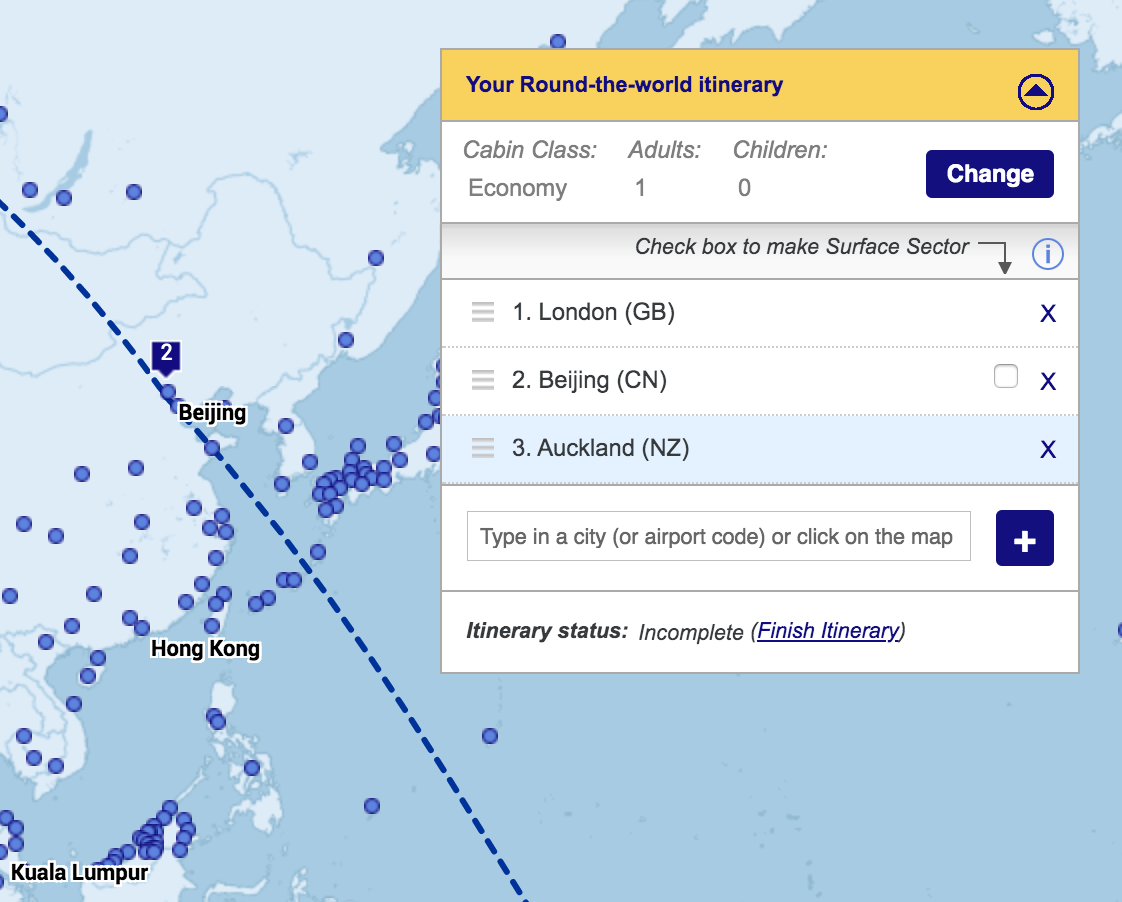
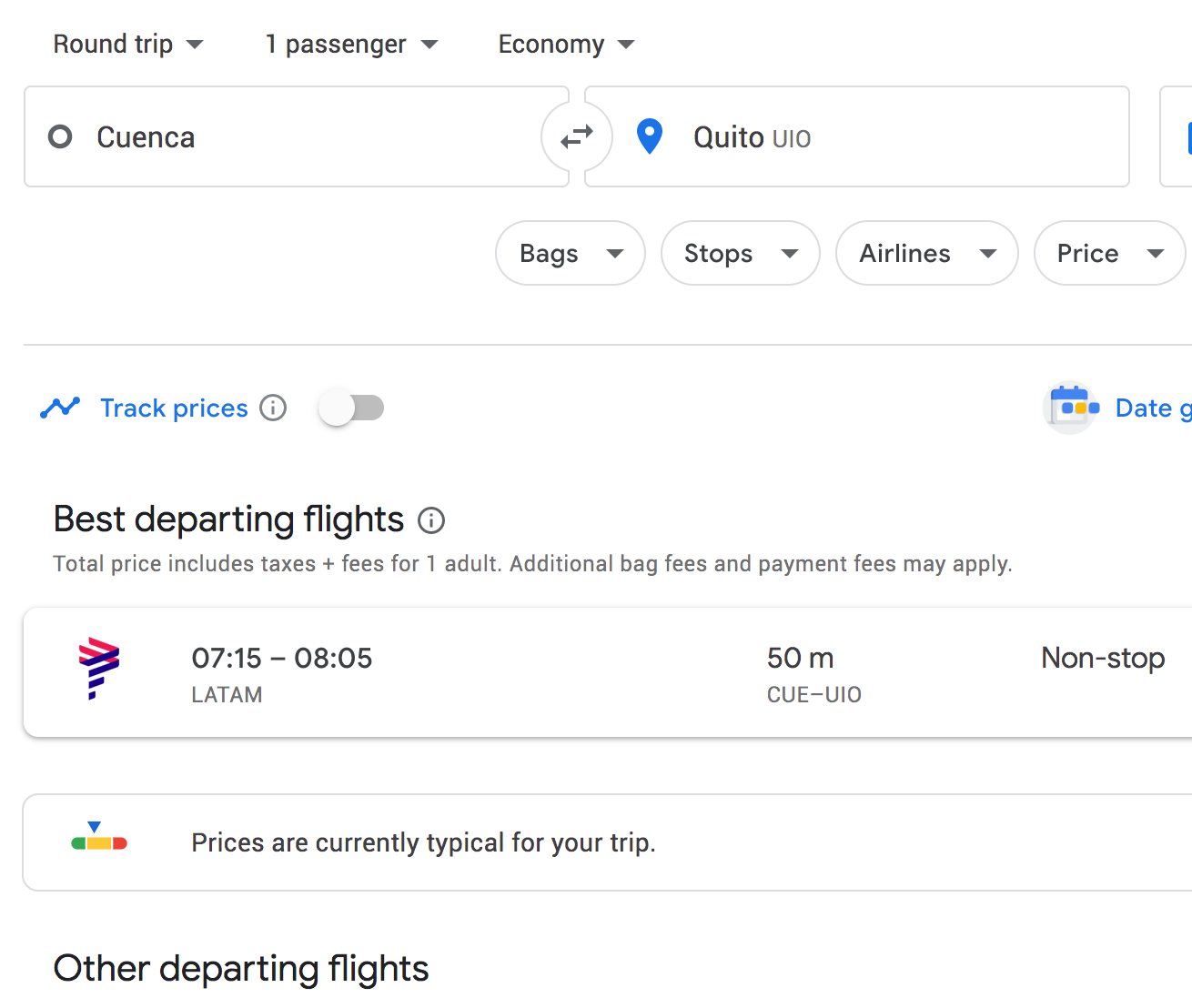
NOTE: We booked only the internationals flights under the same ticket. For the internal ones, we booked them after when doing the day-by-day itinerary.
7. The travel insurance 💰
Once we knew for sure where and when we were going, we started to look for travel insurance. We waited the final itinerary because insurance companies need to know the countries you’re going to and the activities you’re planning to do (hike at high altitudes, scuba-dive, extreme sports…).
Barbara being diabetic, that turned out to be harder than we thought, since most companies don’t ensure people with pre-existing conditions. We initially wanted to go with World Nomads after hearing a lot of good thing about them from friends, but sadly they couldn’t cover us. We then carried on browsing and ended-up with Axa.
We had an incident while travelling (bad food poisoning) which resulted in a 500£ change of plans. We claimed it to Axa and managed to get 400£ back, after a very very long process, featuring a thousand of emails. Long story short, don’t go with them, they did everything they could to scam us. If you do and have a problem, keep all the receipts, ask doctors letters and don’t pay anything cash, even with a proof.
8. The vaccinations 💉
Speaking of insurance and illness, our next step was to get vaccinated against all the horrible diseases. To do so, we simply booked an appointment online at a Boots Travel Vaccination Center. Their process was perfect, they asked us where we were going and when, put it into the computer and told us what we had to do. If you’re an antivaxx, just stop reading, close this page and never come back please.
We started this process 3 months in advance since some of the vaccinations needed recalls with sometime a month interval. In total, we got 7 vaccinations each, which costed us around 400£ (getting a boots card is a good idea). After that, we received a certification for the yellow fever which can be asked at the border of some countries.
We also went to our GP to double check if all our basic vaccinations were up-to-date (chicken pox, measles, polio…) since some of those diseases are still around.
9. The local transports 🚃
After sorting out the overall planning, we started to dive deeper into each country itinerary. That’s kind of optional, depending on how much you want to plan your trip, but in our case we wanted to cover quite some distance, so we needed an overview of the transport system for time estimations.
Our best allies were simply Trip Advisor, various travel blogs and Google Flights. For each transfer, we were looking at the position on the map, checking the distances and eventually if any internal flights could cover it. A good trick with Google Flights is to put the origin airport, select one-way with flexible dates and non-stop filter, and look out the possible connections, like this example from Chongqing.
10. The day-by-day 📝
After having our final dates and a better sense of distances, we jumped into the day-by-day planning. Our idea was not to be 100% precise, but more to understand how long we should stay in each places to have time for all the activities we were planning to do. We followed those simple rules:
- Activity day: one activity a day, except if two could be combined.
- Chill day: one every five, a day to sleep late and plan others things.
- Commute day: commute only since check-in/check-out/taxi/bus is quite tiring.
During the trip, we realized we didn’t put enough chill days. Moving everyday for us was quite tiring, so days to chill were welcome. Another thing we miscalculated was there was always something to take care of, like booking a dive, finding a guide, checking a hike… That jeopardized heavily our chill days, and we would recommend 1 chill day every four.
To make this process efficient, we used Google Sheets as a calendar and can’t recommend it enough, more about it in the tooling section.
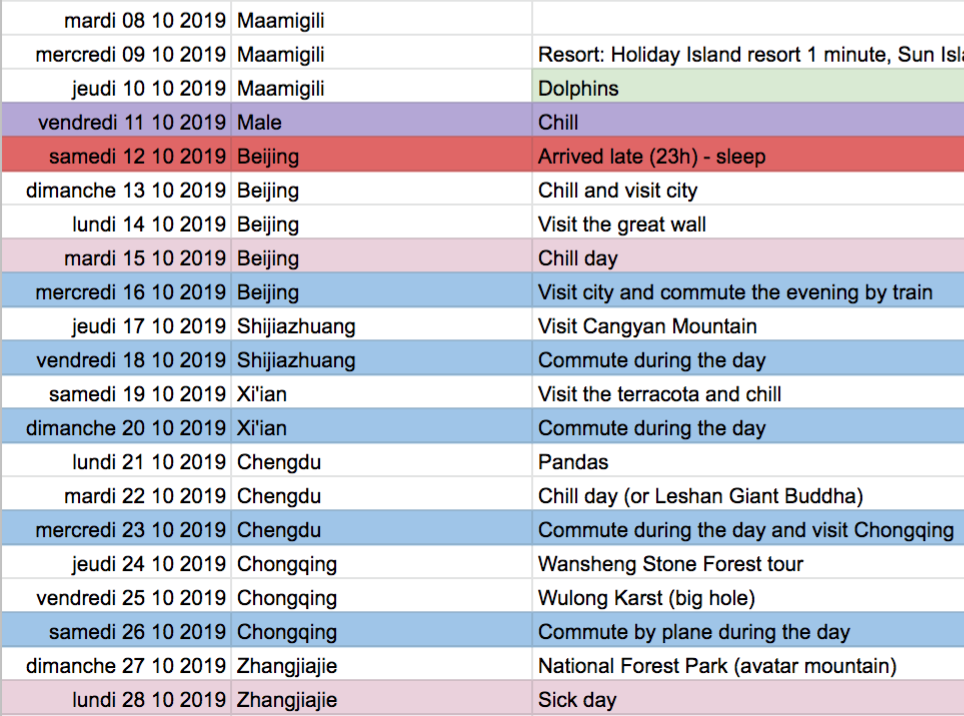
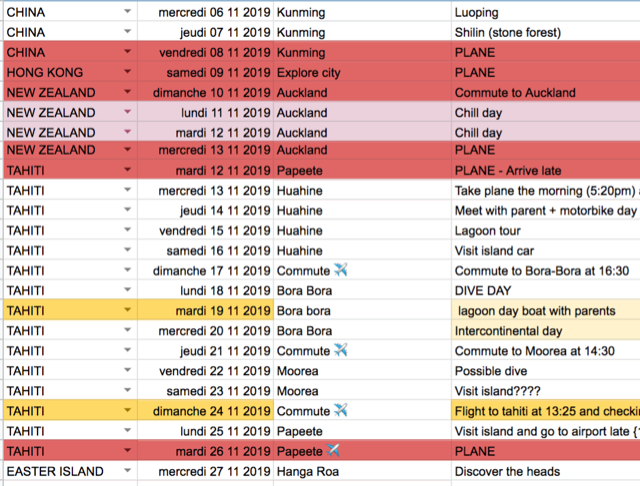
11. The hotels booking 🏠
Having our day-by-day done, we started the process our booking our hotels. That was long and painful, but incredibly useful to do. First because the prices and availabilities change a lot overtime, but also because not having to search an hotel everyday for 5 months is a blessing. To do so, we simply split the itinerary in two, and booked all the rooms via Booking.com or AirBnB using those rules:
- Maximum 30£/night for our budget (up to you).
- Private bathroom and no dorms (handy in case of food poisoning).
- Free cancellation up to 5 days before, since our plan could change anytime.
- English reviews on AirBnB, to be sure we were allowed to stay as foreigners.
- No horrifying reviews related to safety, cleaness or noise until 5AM. We were sorting reviews by negative order to check that, anything more that 8.5 on Booking.com was ok.
We also observed that the optimum time to book hotels or airbnb was 3 months in advance. We booked ours 6 months before, and not many hotels were available at the time. Looking again few months before, we found better deals, specially on AirBnB, so we re-booked a part of those, kinda double-work.
A note on the budget 💸
Budgeting was also a very hard part of the trip planification. We didn’t see that really as a step since it was kind of always something to think about. Our approach was to first decide how much we could and want to spend.
After some economic check, we fixed our budget at 20000£ each including the flights. That’s a lot of money, and it’s possible to do it for maybe half, but we wanted to travel with comfort (no dorms, scuba dive, expensive islands).
To check if our budget matched with our trip, we created another Google Sheets, see the tooling section. We split by country and allocated a budget for each based on the time spent there. We used the following spread:
- 🏠 20% for hotels
- 🍕 20% for food
- 🚌 20% for transport
- 🏄 40% for activities
Some formulas later, that gave us the average we could spend per categories per countries. We then balanced a bit the overall budgets (Polynesia being more expensive than Bolivia) to finally arrive at a realistic estimation.
A note on rewards 🤝
Both of us working for a big tech company, we had the chance to do a lot of business trips all-inclusives. While being away from home sucked, the good thing was the rewards we got. Knowing that we would be travelling for a while, we did our search to maximize our points in the different reward systems.
✈️ Flight rewards
We started by register for a British Airways account. We choose it for several reasons. First because we’re based in London and they offered direct flight almost everywhere. Secondly because it’s a good airline, nothing crazy like Emirates, but still ok. Thirdly because they’re part of One World, which meant a lot of benefits applicable on all the alliance network.
After a year of business travel, we managed to reach the Silver Status, giving us extra bags, priority boarding and lounge access (free food and booze before flying), which was awesome for our 15 flights with them. The only thing we had to do was to specify our frequent flyer number in all our bookings, and be ok to travel for work. We also scored obviously a lot of miles while travelling, which let us book free flights (Lima to Quito for example). There’s no such a thing as small savings.
🏠 Hotels rewards
We did the same for hotel rewards. We found out there’s three hotels superchains: IHG, Marriott and Hilton. We went with IHG since it was the most affordable, with the largest hotel groups. That meant everytime we were travelling, we were looking for a hotel part of this chain with rooms at price fitting in the company budget.
To boost our rewards, we also took their credit card. Every pound spent was converted in 4 points, and they also gave a free night per year. Note that the card cost 85£/year. Thanks to that, we managed to book several free nights, from luxury resort in Bora Bora to basic hotel in Miami.
Afterward, we both think the credit card is more a scam than anything since it got a price and didn’t generated that much point. An airline credit-card would have been better. Anothing we found out was reward night are upon availabilities, which means sometimes we couldn’t book a room with points since the rewards night rooms were fully booked.
Overall Feedback 🤓
After all this planifications and headaches, we got our final itinerary, which we celebrated as it should be, available on the main World Trip post. The only thing to remember is that took us a lot of time, and we were glad we started early, since some items needed to be taken care of in advance. This article is also very subjective, feel free to comment and give us feedback with your own experience!
Hope this was helpful, you can ask us any questions on Instagram.
